WC vs History - The Coming of the Carriers



A long overdue update... my apologies for the delay.
"It is this method of delivery that I find so troublesome...Now if we were launching them from our heavy ships, which could withstand the pounding that the enemy is sure to put up, then I could see it. But to launch this attack from carriers? That still strikes me as nothing short of madness." – Admiral Nargth, 2634
The classic “Gun Club vs. Fly Boys” argument of the interwar Earth navies played out in the Kilrathi Imperial Court. How could a few dozen fighters launched from a venerable “floating volcano” replace the power of the big gunned battleship? It seemed preposterous to many and at first it nearly was. Naval aircraft were inferior to their land-based cousins throughout most of the period between World Wars I & II. The potential of naval aircraft however was not lost on navies and the United States in particular experimented with the aircraft carrier. The role of the carrier within the Fleet was not immediately determined after its invention. The “Fleet Problems” set up a number of situations in the Pacific, Atlantic and the Caribbean where the units of the US Fleet trained and experimented with doctrine to fight potential future enemies. Pearl Harbor was even raided twice by US carriers during training exercises in the 1930s! One of these raids occurred on a Sunday and was called “unfair” by the US Army. Admiral John Towers reported that the Japanese noted the American actions when planning their own attack in a postwar interrogation of Imperial Navy officers.
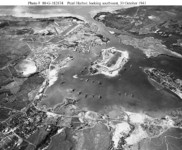

The US Fleet at anchor in Pearl Harbor, October 1941 and the USS Langley in the foreground, America's first carrier, and USS Arizona in the back, the most famous victim of the Attack on Pearl Harbor.
Kilrathi Admiral Nargth did not believe in the strength of puny fighters against the mighty shields and armor of capital ships just as battleship-centric admirals of the American, British, and Japanese navies believed as well. Battleships were heavily armored and packed with guns in every possible location. How could a small fighter or bomber hurt such a mighty ship, they asked. Technological improvements were necessary to give carrier-borne fighters and bombers the power to haul large payloads over respectable distances before they became a serious threat. Naval aviators of every interwar Fleet believed in righteousness of their cause. The British Raid on Taranto in November 1940 wasn’t seen as a major confirmation of the carrier’s role by many line officers. Only a single carrier was involved as well as a small number of aircraft. The Raid on Pearl Harbor was different.
So was the Raid on McAuliffe. Technology was again the critical factor, however instead of engine power and range, the Kilrathi developed the technology to bypass capital ship shields with a fighter-mounted missile weapon. Prior to this development, the Terran Confederation and the Empire of Kilrah existed in a Jutland-centric mindset. They were waiting to fight the climatic battleship engagement with the battle lines of each side pouring blast after blast into each other until the toughest ships were left standing to declare victory. The fighter-launched torpedo changed all that. The Kilrathi used the weapon to gain a significant time advantage over their Confederation opponents because, unlike their Imperial Japanese inspiration, they could not sneak in unnoticed. Confederation forces still had a warning, but it was nowhere near enough to scramble one of the authorized base defense plans. By leading with their carriers, the Kilrathi changed space naval doctrine in a major way throughout the Terran-Kilrathi War.
What made the Raid on Pearl Harbor particularly important was the creation of Kido Butai / First Air Fleet, comprised of Japan’s six large fleet carriers. This force was able to put more than 350 planes into its offensive actions. Piloted by the best trained naval aviators in the world at the time, the planes were able to bring an unprecedented amount of ordnance onto a target and inflict serious damage. On December 7, 1941, Kido Butai launched 354 aircraft at the American military installations around Oahu with devastating results. Less than two hours were required to cause serious damage to a number of US Navy capital ships and the loss of hundreds of naval and Army aircraft around the island.


Carriers of Kido Butai steaming across the Northern Pacific Ocean and the Confederation Mark IV torpedo.
The Raid on McAuliffe was very similar to Pearl Harbor in terms of the carrier strikes, however at McAuliffe the Kilrathi brought heavy capital ships to do battle with Confederation forces in addition to invasion and occupation forces. The Kilrathi sortied towards the Confederation with an enormous amount of force. It was a three-pronged offensive with each thrust centered on a Kilrathi fleet. The main objective of the initial offensive was the Second Fleet of the Claw’s raid on McAuliffe and the Confederation’s Seventh Fleet. Two other Fleets of the Claw were to strike on the flanks of the Confederation into the Landreich and Etruria with substantial force not long after the Kilrathi engaged Confederation forces at McAuliffe. The goal was to hit the Confederation so hard with the initial strike that the Kilrathi needed only to mass their fleets and jump to Earth to finish off Humanity.
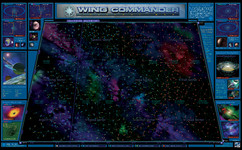
The Confederation and Kilrathi, circa 2681. The Kilrathi offensive attacked with three fleets across the frontier in 2634.
Crown Prince Gilkarg constructed an attack plan that centered on the success of the new torpedoes. Their use enabled the Kilrathi to defeat the substantial defenses of McAuliffe, Alexandria and the Skyhook. Carrier launched fighters and bombers were able to close the distance from the jump point to attack positions much faster than capital ships. The time was used smashing Confederation forces. . Five carriers, at least four battleships and more than eighty cruisers, destroyers and other ships were destroyed along with more than 250,000 personnel and an unknown number of civilians. A blow of this magnitude should have been enough to sweep the Confederation forces aside and allow the Kilrathi to charge to and then bombard Earth into oblivion.
Instead Confederation forces mounted an incredibly bold counterattack. The attack was expected to deal a severe blow to Kilrathi morale and Imperial prestige, and just possibly delay the Second Fleet of the Claw enough to mount a coherent defense of the Core Worlds. It succeeded in both goals beyond the dreams of Commander Winston Turner and Admiral Naomi Dayan. Bombers from TCS Ark Royal and three frigates from Task Force 21 mounted a diversionary attack on the nearest Kilrathi carrier, Tukgah, while fighters from Concordia would hit the Imperial landing craft. TF 21's two battlewagons, Yorkshire and North Carolina, and their cruiser squadrons provided fire support. The most desperate part of the plan was a kamikaze strike by the frigates Masada and Hermes. TCS Masada, carrying the son of Admiral Dayan, rammed KIS Tukgah, destroying the carrier completely. Confederation fighters meanwhile had broken off the strike on the Tukgah and headed for McAuliffe where Kilrathi landing craft were making their descent to the surface. The fighters inflicted horrendous losses on the Imperial legions with a massive coordinated missile strike followed by a high speed gunnery pass. The legions suffered in the nature of fifty percent losses. It was a catastrophe.
TCS Yorkshire, slowed by engine damage, was unable to keep up with the rest of the retreating Confederation forces. After reporting its status to Admiral Dayan and Commander Turner, it transmitted its famous final call, now the eternal call of all Wingnuts: “This is TCS Yorkshire. Long Live the Confederation!”
In the moments that followed, Yorkshire represented herself well against two Kilrathi battlewagons. Yorkshire was lost, but also took one of the Kilrathi with her and heavily damaged the other ship, Admiral Nargth’s flagship. A final Kilrathi carrier strike continued to close on the other Confederation ships and succeeded in putting another torpedo into the Concordia. The ship was spared by more hits only by the heroic self-sacrifice of its Wing Commander, a man named Hawkins, who rammed the last Kilrathi bomber with his Wildcat fighter. Prince Ratha, son of Gilkarg and older sibling of Thrakhath, after being shot down by Ensign Geoffrey Tolwyn, committed suicide by opening the mask of his helmet to the void of space rather than face the perceived dishonor.
Confederation forces jumped out of McAuliffe assuming that a hot pursuit by Kilrathi forces would commence immediately. They were soon surprised when no Kilrathi ships followed them. The offensive had been called off. Admiral Nargth had communicated directly with Emperor Joor’rad the losses suffered by the Imperial Legions and other forces. The Emperor was concerned at the staggering losses of so many of his own clan’s Kil. Humanity was not to be the pushover Gilkarg had anticipated.


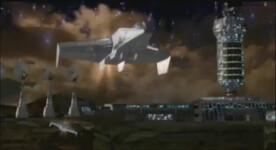



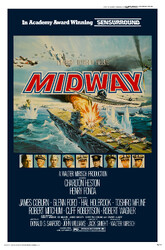

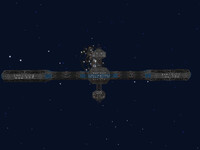



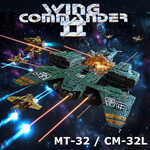

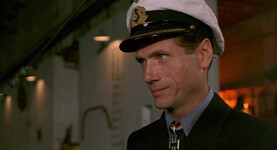
Follow or Contact Us